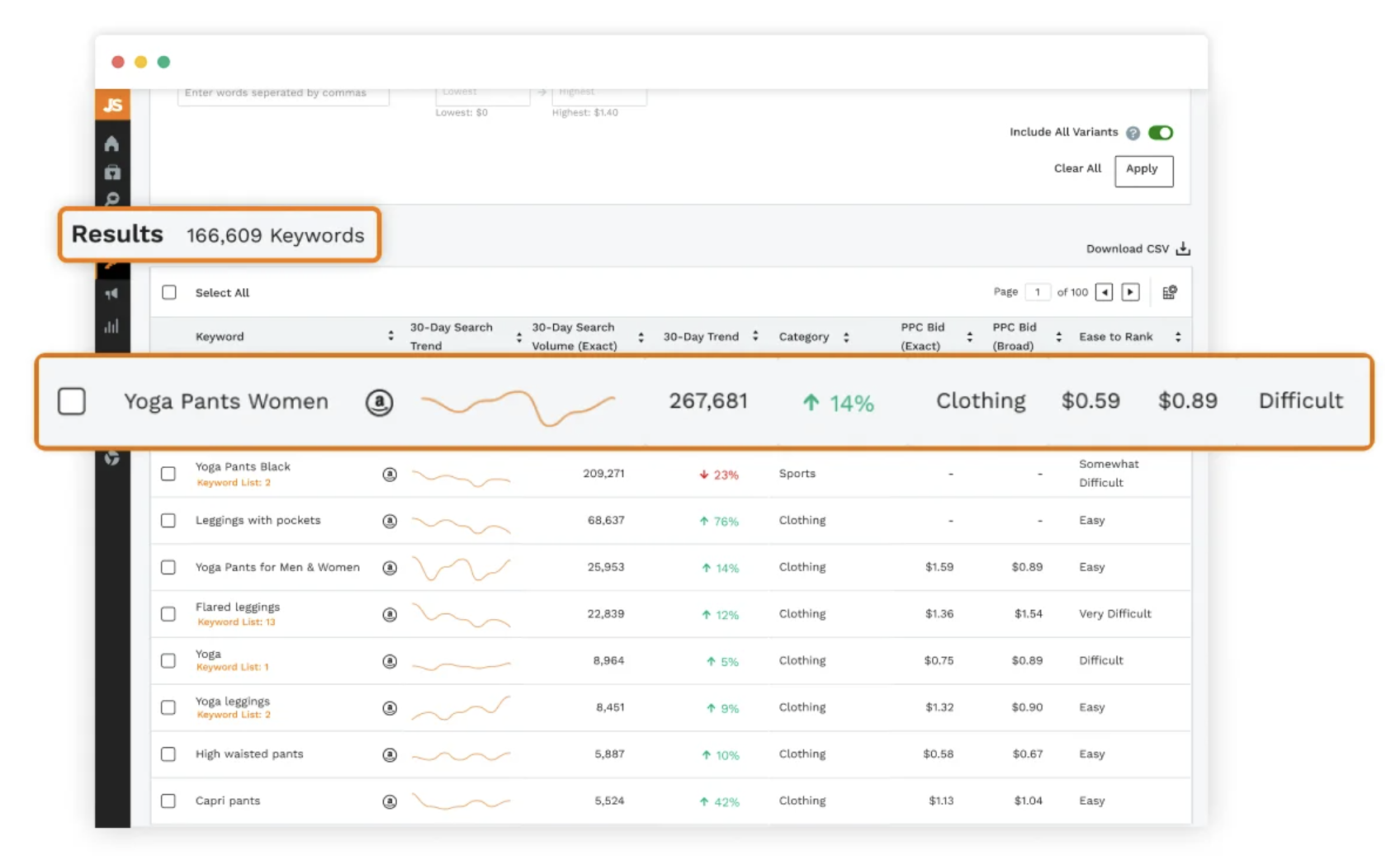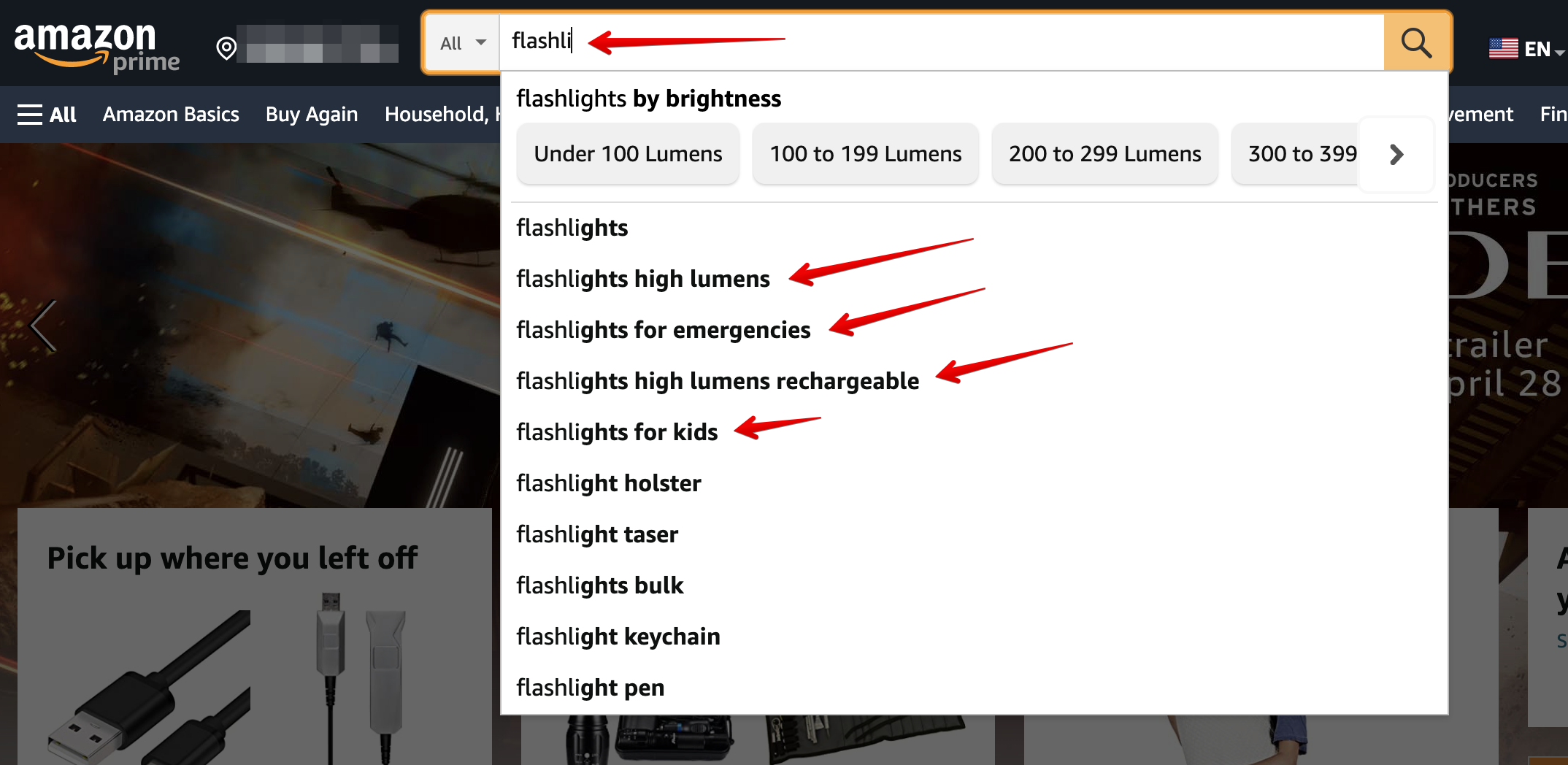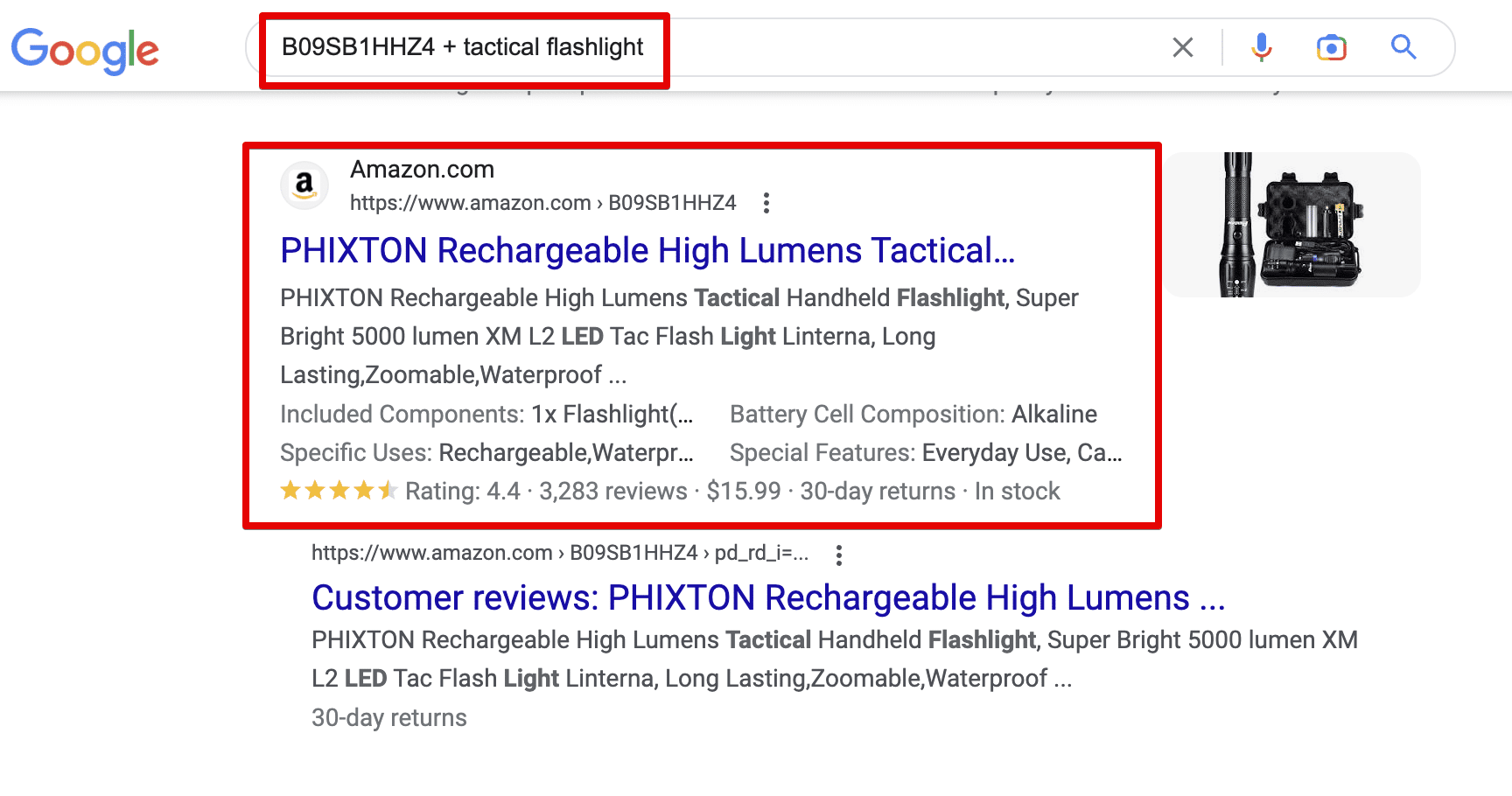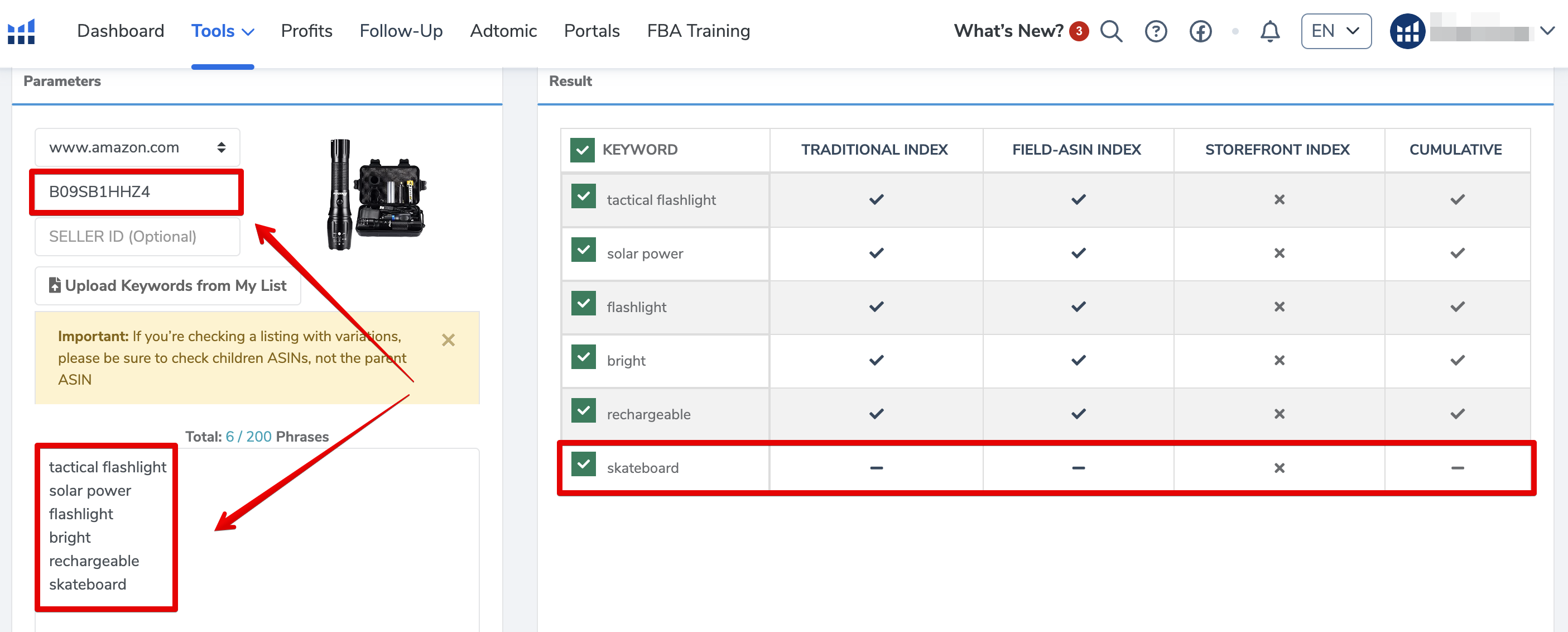How to Rank Higher and Sell More Using a “Hidden” Amazon Keyword Strategy
Optimize your product listings with a winning Amazon keyword strategy. Learn how to leverage backend keywords to improve visibility on Amazon

Amazon sellers today are investing heavily in Amazon SEO and listing optimization, but what happens behind the scenes often has the biggest impact on your success.
While product titles, images, bullet points, and descriptions are visible to customers, there’s a powerful hidden element that many sellers overlook: Amazon backend keyword search terms.
Amazon’s A10 algorithm now places even greater emphasis on customer behavior signals, conversion rates, and machine learning to determine search rankings.
Keywords remain crucial, but the algorithm has become more sophisticated in understanding search intent and user experience. Strategically placed backend keywords can be the difference between appearing on page one or getting lost in the marketplace.

What are Amazon Backend Keywords?
Backend keywords are hidden search terms that only you, the seller, can see and edit. While shoppers browsing your listing can’t see these keywords, they play a crucial role in helping customers discover your products through Amazon’s search algorithm.
These hidden keywords allow you to target relevant search terms that didn’t naturally fit into your visible listing content. This approach helps you create engaging, readable product pages while ensuring Amazon indexes all the critical keywords needed for optimal ranking.
Current specifications: As of 2024, Amazon has updated its backend keyword limits for sellers. Previously, the limit was 250 bytes, but it has now been increased to 2500 characters, divided into five fields of 500 characters each.
The big question is, how do you find the right keywords in the first place?
Thinking About Hiring an Amazon Management Agency?
Canopy’s Partners Achieve an Average 84% Profit Increase!
Let’s talkHow to Find the Best Backend Keywords
It’s actually not as hard as it sounds. You just need to determine what your customers are searching for. What are the exact phrases or keywords they use when searching for the same product on Amazon?
Here’s the catch; to create listings that sell on Amazon, the keywords that you find need to have high enough search volume to have a positive affect on your Amazon sales. At the same time you don’t want to battle against every other Amazon seller in your niche. This is where longer-tailed keywords are invaluable.
If you’re selling girls ballet shoes, a great keyword might be exactly that, “girls ballet shoes.” The keyword “girls athletic shoes” is not niched down enough, and you’ll have a lot of competition for a keyword that isn’t really bringing you exact shoppers you need to increase your business.
Developing a process to identify great backend keywords for your Amazon listing is a crucial step in improving your product’s visibility and increasing sales.
Here are the four top strategies for finding effective backend keywords:

Advanced Keyword Research Strategies for 2025
Finding the right backend keywords requires understanding exactly what your customers search for and how Amazon’s evolved algorithm interprets search intent.
1. Leverage AI-Powered Keyword Research Tools
Modern keyword research tools have significantly advanced over the last few years:
Top Current Tools:
- Helium 10: Now includes AI-powered keyword suggestions and voice search optimization
- Jungle Scout: Enhanced competitor analysis and seasonal keyword tracking
- MerchantWords: Improved long-tail keyword discovery with intent analysis
- Keyword Tool Dominator: Better international marketplace support
- DataHawk: Advanced competitor keyword gap analysis
These tools now provide insights into search volume, competition levels, seasonal trends, and customer search intent patterns.
2. Competitor Intelligence and Gap Analysis
Analyzing successful competitors remains valuable, but the approach has evolved:
- Use reverse ASIN lookup tools to discover competitors’ indexed keywords
- Identify keyword gaps where competitors aren’t ranking
- Analyze seasonal keyword strategies from top performers
- Monitor competitor PPC campaigns for emerging keyword trends
While you don’t want to copy their keywords directly, using the top two or three listings as a rough guide can give you ideas for relevant terms that you may not have thought of.
3. Amazon’s Enhanced Auto-Suggest
Amazon’s auto-suggest feature has become more sophisticated, now incorporating:
- Voice search queries
- Mobile-specific search patterns
- Regional search variations
- Seasonal and trending terms
By typing your product’s main keywords into Amazon’s search bar and observing Amazon’s auto-suggested search terms, you can get valuable insights into what Amazon itself has identified as the best search terms. Because these suggestions are based on real customer search queries, they provide direct insight into popular keywords and phrases.

In the above screenshot, I began typing the keyword, “flashlight” into the search bar. Four out of the first five keywords are perfect for an Amazon listing’s back end.
4. Advanced PPC Keyword Intelligence
Amazon PPC has expanded with new campaign types and targeting options:
- Sponsored Products: Automatic campaigns now include close match, loose match, substitutes, and complements
- Sponsored Brands: Video campaigns provide additional keyword insights
- Sponsored Display: Interest and category targeting reveal broader keyword opportunities
In an automatic pay-per-click campaign, Amazon’s algorithm identifies relevant keywords from your product listing while using data from clicks and purchases to optimize for conversions. Run automatic campaigns for 4-6 weeks before harvesting search term data for backend optimization.
While this method requires investment in PPC campaigns, the benefits of an optimized strategy easily outweigh the expense.

Mobile and Voice Search Optimization
With mobile commerce dominating Amazon sales, backend keywords must account for mobile search behavior:
Mobile-Specific Considerations:
- Shorter, more conversational search terms
- Local intent keywords (“near me” variations)
- Quick decision-making keywords
- Thumb-friendly search patterns
Voice Search Integration:
- Include natural language phrases
- Target question-based keywords (“what is the best…”)
- Consider voice assistant compatibility
- Include conversational long-tail terms
International Marketplace Strategy
For global sellers, backend keywords should reflect regional differences:
- Language variations: Include British vs. American English spellings
- Cultural preferences: Different regions may use different terms for the same product
- Local competitors: Research region-specific competitor keywords
- Currency and measurement units: Include both metric and imperial terms when relevant
Ready to Start Growing Your Amazon Brand?
Canopy’s Partners Achieve an Average 84% Profit Increase!
Find out moreSeasonal and Trending Keyword Management
Backend keywords should evolve with market trends:
Quarterly Reviews:
- Update seasonal keywords before peak periods
- Remove outdated trending terms
- Add emerging industry terminology
- Monitor competitor seasonal strategies
Trending Topic Integration:
- Social media trend keywords
- Pop culture references (when relevant)
- Current events impact on search behavior
- Industry-specific trending terms
How to Check Whether Your Keywords are Indexed
Ensuring your keywords are properly indexed remains crucial:
Manual Verification Method:
- Find your product’s ASIN (10-character identifier)
- Search “ASIN + keyword” in Amazon’s search bar
- Verify your product appears in results
Advanced Indexing Tools:
- Helium 10’s Index Checker (now includes mobile indexing status)
- Jungle Scout’s Keyword Scout
- Sellics Index Checker
- DataHawk’s indexing monitor
New Indexing Considerations:
- Some keywords may index for PPC but not organic search
- Mobile vs. desktop indexing can differ
- Voice search indexing may have different requirements
- International marketplace indexing varies by region
The Amazon result shows just one listing as well as sponsored ads by competitors running in the same location.


And the Google result:

Now, let’s use Helium 10’s Index Checker to see if a list of potential keywords that I think might be associated with an ASIN are in fact indexed for that particular Amazon ASIN. I’m also including an unlikely “control” keyword, “skateboard.”

In the screenshot above you can see that all the prospective keywords (except for the control) are in fact indexed by Amazon for that particular ASIN.
Amazon Backend Keyword Best Practices
Taking full advantage of Amazon backend keywords can quickly improve your product’s visibility and help customers find your listing more easily. To make sure to get the biggest boost from this hidden resource, here are some do’s and don’ts for using Amazon backend keywords in an Amazon listing:
Do:
Strategic Keyword Selection:
- Include relevant, specific keywords that accurately describe your product
- Use synonyms, plural forms, and alternate spellings
- Target both broad and long-tail keywords for comprehensive coverage
- Include common misspellings of terms (customers often misspell)
Technical Optimization:
- Stay within the byte limit (monitor bytes, not just characters)
- Use commas or spaces to separate keywords (both work effectively)
- Include both singular and plural forms when space allows
- Add regional spelling variations for international reach
Performance Monitoring:
- Update keywords based on search term report data
- Test keyword performance through A/B testing when possible
- Monitor seasonal trends and adjust accordingly
- Track competitor keyword strategies regularly
Don’t:
Policy Violations:
- Never use competitor brand names or trademarked terms
- Avoid misleading or irrelevant keywords
- Don’t include prohibited words or offensive content
- Avoid temporary promotional terms (“sale,” “discount,” “free shipping”)
Technical Mistakes:
- Don’t repeat keywords (wastes valuable space)
- Avoid excessive punctuation or special characters
- Don’t use ALL CAPS (doesn’t improve ranking)
- Never include ASINs, URLs, or contact information
Strategic Errors:
- Don’t ignore mobile search patterns
- Avoid keywords with extremely high competition if you’re a new seller
- Don’t set and forget – backend keywords need regular optimization
- Avoid keywords that don’t match your actual product

How AI Search Changes Your Backend Keyword Strategy
Most sellers are still stuffing backend fields with exact-match keywords.
Meanwhile, Amazon’s AI systems completely rewrite how search works behind the scenes. The result? Your carefully researched keyword lists become irrelevant overnight.
We’ve analyzed backend keyword performance across $3.2 billion in managed revenue. Here’s what we discovered: The sellers winning in 2025 aren’t just optimizing for keywords – they’re optimizing for customer intent in their backend terms.
The AI Systems Changing Backend Optimization
Amazon’s COSMO (Common Sense Knowledge Generation) and RUFUS conversational AI don’t just match words – they understand meaning and context.
When someone searches “winter clothes,” the AI knows they need warmth. Your backend keywords should anticipate this contextual understanding, not just match literal phrases.
The New Backend Keyword Framework: Beyond Exact Match
Forget traditional keyword density in your backend fields.
Here’s our systematic approach for AI-optimized backend terms:
1: Semantic Variations (40% of backend space) Instead of: “bluetooth headphones, wireless headphones, earbuds” Use: “wireless earbuds small ears, headphones phone calls, sweat proof workout headphones”
2: Problem-Solution Context (35% of backend space) Add terms that describe what your product solves:
- Customer pain points (“tangle free,” “noise canceling,” “long battery”)
- Use case scenarios (“gym workout,” “office calls,” “travel”)
- Demographic needs (“for runners,” “small ears,” “elderly users”)
3: Intent-Based Descriptors (25% of backend space) Include emotional and functional outcomes:
- Situational modifiers (“during exercise,” “for commuting,” “while sleeping”)
- Benefit-focused terms (“comfortable,” “durable,” “convenient”)
- Lifestyle integration (“professional,” “athletic,” “casual”)
Critical Backend Updates for AI Compatibility
Amazon’s AI analyzes these specific functions in your backend terms:
- “Used for” – Primary purpose keywords
- “Used on” – Application target terms
- “Used with” – Complementary product keywords
- “Interested in” – Customer motivation terms
Your backend strategy should feed each category systematically.
Implementation: 30-Day Backend Optimization
- Audit current backend keywords using search term reports
- Rebuild using the 3-tier framework above
- Test indexing for new semantic variations
- Optimize based on search term performance data
Bottom line: Your backend keywords need to anticipate how AI interprets customer intent, not just match what customers type.
Performance Measurement and Optimization
Track the effectiveness of your backend keyword strategy:
Key Metrics:
- Organic search ranking improvements
- Click-through rate increases
- Conversion rate maintenance or improvement
- Search term impression share growth
Optimization Cycle:
- Monthly keyword performance reviews
- Quarterly competitor analysis updates
- Seasonal keyword strategy adjustments
- Annual comprehensive keyword audit
Ready to Optimize Your Amazon Strategy?
Amazon’s marketplace continues evolving, making backend keyword optimization more sophisticated but also more rewarding when done correctly. By staying current with algorithm updates, leveraging advanced tools, and maintaining a customer-focused approach, your backend keyword strategy can drive significant improvements in visibility and sales.
The key is treating backend keywords not as a one-time setup task, but as an ongoing optimization opportunity that adapts to changing customer behavior, market trends, and Amazon’s evolving algorithm priorities.
Strategic, carefully chosen keywords and Amazon listing optimization is how you’ll connect shoppers with your highest-quality products. By making sure that your backend keywords are fully optimized, you’re putting your products right in the middle of an enormous Amazon opportunity.
How Canopy Can Help
Canopy Management is a full-service marketing agency for Amazon, Walmart, and TikTok sellers. Our team consists of multi-million dollar, omni-channel entrepreneurs, industry leaders, and award-winning experts.
Our comprehensive services include:
- Strategic Growth Planning
- Listing Copywriting Optimization
- Listing Photography
- Product Videography
- Advertising Management
- Customer Service
- Demand Side Platform (Amazon DSP)
- Full Service Management
- Review Aggregation
Schedule a consultation today to discover how our expert team can transform your Amazon presence and drive sustainable growth for your brand.




